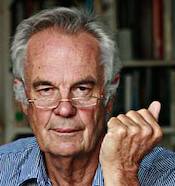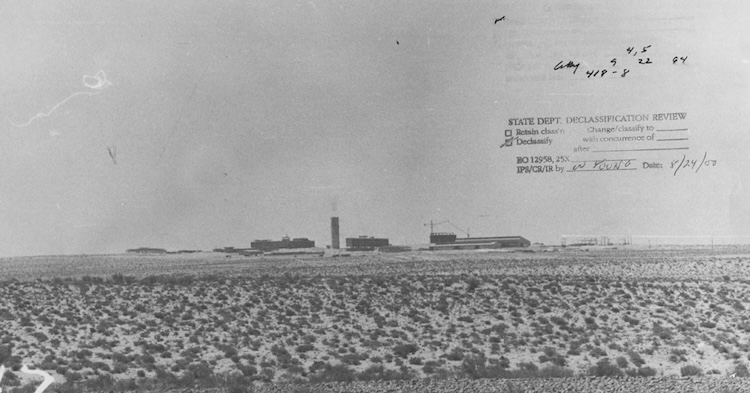By Jonathan Power*
LUND, Sweden | 4 November 2025 (IDN) —The story of Israel’s nuclear bomb is rarely told. Yet we hear a lot about the possible Iranian bomb and the dangerous bombs of Pakistan that militant Islamists might seize—although that is unlikely, given that the U.S. has supplied state-of-the-art locks to Pakistan.

And then there are the nuclear arsenals of India, the United States, China, Russia, France, and the United Kingdom. There used to be a South African bomb—Israel worked with South African bomb scientists—and there were attempts by Sweden, Libya, Brazil, and Argentina to build one. These five all voluntarily gave up their nuclear weapons programs, while the ex-Soviet republics of Ukraine and Kazakhstan surrendered their arsenals.
As for the would-be Iranian bomb, it is often forgotten that the Shah—with U.S. knowledge—was the one who initiated the research that he hoped could lead to a bomb. (There is still no proof that Iran today is building one.)
We have a history of the Israeli bomb in a riveting book, Fortress Israel, by The New York Times’ Patrick Tyler, who unearthed material that had never been publicly explored before.
Kennedy’s Struggle with Ben-Gurion
It was during the U.S. presidency of Dwight Eisenhower that Israel’s political and military establishment decided to build a nuclear bomb. But Eisenhower was hoodwinked, although the CIA reported its suspicions about Dimona, the Israeli nuclear research site. His successor, John F. Kennedy, likewise, was gravely misled.
It was not until May 1963 that the administration was convinced that Israel was building a bomb, and Kennedy went into battle to stop it—but the Israeli leadership constantly lied to him.
Kennedy invited Israeli Prime Minister David Ben-Gurion to the U.S. in an effort to persuade him to abandon the nuclear bomb project. Ben-Gurion denied that Israel was trying to build one but agreed that the U.S. could inspect the Dimona site. However, the American scientists were steered away from hidden doors and cosmetic barriers and never discovered the large underground laboratory producing plutonium, the raw material for a bomb.
Although in public, the U.S. agreed with Israel that the Dimona reactor was only for peaceful purposes, Kennedy remained sceptical—and with reason. Ben-Gurion told him at another meeting that in three or four years, Israel might need to produce plutonium.
The administration continued to pressure Israel to reconsider Dimona. “Kennedy now understood he was being diddled,” writes Tyler. Kennedy told Ben-Gurion that U.S. “support for Israel would be seriously jeopardised if it should be thought that the government was unable to obtain reliable information on a subject as vital to peace as the question of Israel’s efforts in the nuclear field.”
In mid-June 1963, Kennedy again applied pressure. Ben-Gurion had put the Israeli relationship with the U.S. at risk. He was cornered—and he knew it. The reactor at Dimona was about to go critical, and the underground facility was being readied to extract weapons-grade fissile material. In a patriotic gesture, Ben-Gurion resigned the premiership—and it had the effect he wanted. Everything in the relationship was put on hold. A vital, threatening letter from Kennedy was never delivered.
The Nuclear Question Buried
Later, Kennedy continued to question the new prime minister, Levi Eshkol. But soon, Kennedy was assassinated—relieving Israel of his relentless attention. His successor, Lyndon Johnson, convinced himself that if America gave Israel all the arms it wanted, it wouldn’t continue manufacturing a bomb. He pressed for another U.S. inspection of Dimona, but Eshkol resisted him, reneging on a promise to allow it.
Time moved on. Johnson resigned, and Richard Nixon took office, appointing Henry Kissinger as his National Security Advisor. Kissinger told Golda Meir, Israel’s first female prime minister, that the U.S. would never pressure her—even though the CIA had told him Israel already had at least ten atomic bombs.
Ambassador to the U.S. and later prime minister, Yitzhak Rabin, told Kissinger that “Israel needed the bomb for two reasons: first, to deter the Arabs from striking Israel; and second, if deterrence fails and Israel were about to be overrun, to destroy the Arabs in a nuclear Armageddon.” Ironically, by the time of his assassination, Rabin was considered a dove and a liberal.
The Can Still Be Kicked Down the Road
On Meir’s first visit to Washington to meet the new president, the secret bomb was barely mentioned. When it was, “it was in the context that Nixon had not determined his policy on nuclear proliferation; he was kicking it down the road,” writes Tyler.
And that is where Israel’s nuclear bomb has rested down to the present day—a can kicked out of sight. The U.S. State Department told me that it will “neither confirm nor deny” my question as to whether Israel has the bomb—a nonsensical observation, since more than one top-ranking Israeli has confessed that it does.
No U.S. president apart from Kennedy has given his full attention to the issue—and there is no sign that one ever will.
*Jonathan Power has been an international foreign affairs columnist for over 40 years and a columnist and commentator for the International Herald Tribune (now the New York Times) for 17 years. [IDN-InDepthNews]
Copyright © Jonathan Power
Image: Israel’s nuclear reactor Dimona. Source: Wikimedia Commons.

